Sake isn’t just for sipping – it’s a secret weapon in the kitchen. The right cooking sake adds depth, umami, and a touch of sweetness to your favorite recipes. Whether you’re preparing teriyaki, soups, or stir-fries, choosing the right sake can make all the difference. Here’s how to find the best one for your culinary needs.

1. Hakkaisan Tokubetsu Junmai
Hakkaisan Tokubetsu Junmai is a junmai-style sake available both domestically in Japan and for export. The rice used in this sake is polished to 60%, resulting in a clean and refined character suitable for both cooking and pairing with food. With an alcohol content of 15.5% and moderate acidity, this sake has a mellow and smooth character. It does not contain any added distilled alcohol, consistent with junmai classification.
These characteristics make it suitable for culinary use where a clean, umami-supporting liquid is needed, without overpowering the other ingredients in a dish.
This sake is versatile for cooking, especially when recipes call for sake to enhance flavors or tenderize meat. Its balanced profile supports a range of dishes without adding excessive sweetness or sharpness. The use of polished rice and careful fermentation ensures a product with stable quality and no artificial flavorings.
Key Highlights:
- Junmai-style sake with no added distilled alcohol
- Rice polishing ratio of 60%
- Brewed with Yamada Nishiki and Gohyakumangoku rice varieties
- Uses Kyokai No. 901 yeast
- Slightly dry with a mellow taste
- Alcohol content of 15.5%
- Suitable for culinary use due to its clean and balanced profile
What will it go with:
- Light broths and soups
- Marinades for poultry or pork
- Glazes and sauces requiring mild depth
- Stir-fries with vegetables or tofu
- Rice dishes such as takikomi gohan or pilaf
- Simmered or braised dishes where sake helps soften texture and reduce odor
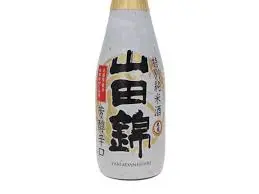
2. Ozeki Yamadanishiki Tokubetsu Junmai
Ozeki Yamadanishiki Tokubetsu Junmai is brewed using Yamadanishiki rice, which is commonly used in high-grade sake due to its consistency and quality during fermentation. This junmai-style sake has an alcohol content of 14%. Its balance of subtle sweetness and umami makes it a practical option for use in the kitchen.
This sake is suitable for cooking because of its clean profile and ability to blend well with different ingredients. It works without overpowering the flavor of a dish. It can be used in a range of preparations, including broths, glazes, and marinades, especially in recipes where sake is meant to enhance texture or reduce strong odors. Its availability and consistent taste also make it a reliable choice for home or professional kitchens.
Key Highlights:
- Junmai classification with alcohol content is 14%
- Brewed with Yamadanishiki rice
- Balanced flavor profile with mild umami
- Smooth and neutral taste suitable for cooking
- Works in both hot and cold culinary applications
What will it go with:
- Steamed or simmered seafood
- Marinades for meat or poultry
- Vegetable dishes with light seasoning
- Stir-fries and sauces needing mild umami
- Soups and stews where sake adds depth without dominating
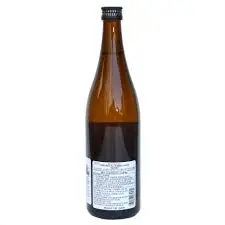
3. Suigei Tokubetsu Junmai “Drunken Whale”
Suigei Tokubetsu Junmai, known as “Drunken Whale,” is brewed in Kochi Prefecture and falls under the Tokubetsu Junmai category. Tokubetsu Junmai classification due to a higher rice polishing ratio (approximately 60%). The sake features a very dry profile, with a sake meter value (SMV) of +7 and an acidity level of 1.6, contributing to its crisp and structured character. The sake is clean in both texture and finish. It shows best when served slightly chilled or warmed and pairs easily with a wide variety of dishes. Its dryness and moderate complexity make it appropriate for those looking for a more neutral sake that complements food rather than competes with it. Despite its strong profile, it remains balanced and approachable, especially for dry wine or hoppy beer drinkers.
Key Highlights:
- Tokubetsu Junmai classification due to a higher rice polishing ratio (approximately 60%)
- Very dry with SMV of +7
- Clean texture and dry finish
- Suitable both chilled or gently warmed
What will it go with:
- Vegetable tempura
- Albacore sashimi
- Green salads with soy or ginger dressing
- Light grilled dishes
- Mild stir-fries with seafood or vegetables
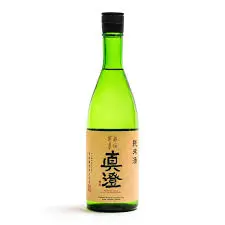
4. Masumi Okuden Kantsukuri Junmai
Masumi Okuden Kantsukuri Junmai is a classic junmai sake from Miyasaka Brewery in Nagano Prefecture. Brewed with Hitogokochi rice or a blend of local rice varieties. This sake is medium-dry, with a Sake Meter Value (SMV) of +2 and an acidity level of 1.5. It has a smooth entry and gradually reveals subtle, natural flavors with a mild sweetness. The style is approachable and consistent, making it suitable for a variety of dishes.
It is versatile in temperature and can be served chilled or gently warmed. The flavor holds up well alongside both Japanese and Western dishes, especially foods with umami or grilled elements. Its approachable and mellow taste makes it a familiar and steady choice for experienced sake drinkers.
Key Highlights:
- Junmai classification, brewed with Miyamanishiki rice
- Medium-dry with SMV +2 and acidity 1.5
- Smooth and mild flavor, lightly sweet
- Vegetarian and vegan-friendly
- Can be served chilled or warm
What will it go with:
- Cheeseburgers or grilled meats
- Roast beef or sausages
- Fried sides like onion rings or calamari
- Grilled or BBQ prawns
- Dishes with mild spices or soy-based sauces
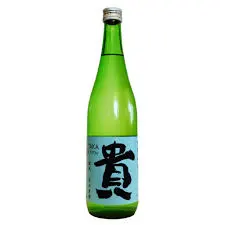
5. Taka “Noble Arrow” Tokubetsu Junmai
Taka “Noble Arrow” is a Tokubetsu Junmai sake produced by Nagayama Honke Brewing Company in Yamaguchi Prefecture. Brewmaster Takahiro Nagayama, who trained in Burgundy, brings a terroir-focused approach to sake brewing. The sake is made using Yamada Nishiki rice, polished to 60%. It is brewed with soft local water, contributing to its clean and structured profile. Best served chilled, it pairs well with seafood dishes such as poached halibut, Dover sole, or shrimp in garlic oil.
Key Highlights:
- Tokubetsu Junmai classification with 60% rice polishing ratio
- Brewed with Yamadanishiki rice
- Uses soft water local to Yamaguchi Prefecture
- Best served chilled
- Clean structure with herbal and fruit notes
What will it go with:
- Poached halibut
- Dover sole
- Shrimp in garlic oil
- Herb-driven dishes
- Salads with vinaigrette
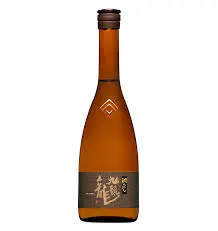
6. Kokuryu Junmai Ginjo “Black Dragon”
Kokuryu Junmai Ginjo, known as “Black Dragon,” is brewed in Fukui Prefecture using Gohyakumangoku rice polished to 55%. This sake presents a mild aroma with hints of steamed rice and underlying notes of melon. On the palate, it offers a rich and full-bodied experience with umami flavors, complemented by touches of fruit, rice, nuts. The finish is satisfying and smooth.
The sake’s structure is both expansive and clean, allowing it to pair well with a variety of dishes. It is best enjoyed slightly chilled or at room temperature, which helps to highlight its nuanced flavors. The balanced profile makes it suitable for pairing with hearty fare, enhancing the dining experience without overpowering the food.
Key Highlights:
- Junmai Ginjo classification with 55% rice polishing ratio
- Brewed with Gohyakumangoku rice
- Mild aroma with hints of steamed rice and melon
- Rich, full-bodied flavor with umami, fruit, rice, and nut notes
- Best served slightly chilled or at room temperature
What will it go with:
- Grilled meats
- Braised fish
- Root vegetables
- Hearty fare that benefits from a balanced sake pairing
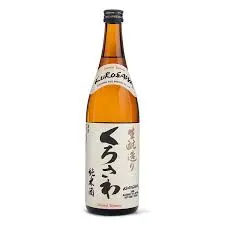
7. Kurosawa Junmai Kimoto
Kurosawa Junmai Kimoto is brewed in Nagano Prefecture using the traditional kimoto method, which involves natural lactic acid fermentation. This process contributes to the sake’s robust character and prominent acidity. Made from locally grown rice milled to 65% and pure snowmelt water, it offers a full-bodied and earthy flavor profile. The taste includes notes of black walnuts and cacao nibs, with a rustic and complex depth.
This sake is versatile in serving temperature. When served chilled, it maintains a lean and acidic profile. Gently warming it to around 100°F brings out sweetness and chocolate notes. Its balanced structure makes it suitable for pairing with a variety of dishes, especially heartier fare.
Key Highlights:
- Junmai classification with 65% rice polishing ratio
- Brewed using the traditional kimoto method
- Flavor notes of black walnuts and cacao nibs
- Versatile serving temperature: chilled or gently warmed
- Full-bodied and earthy profile with prominent acidity
What will it go with:
- Grilled meats
- Yakitori
- Ramen
- Izakaya-style dishes
- Fried foods
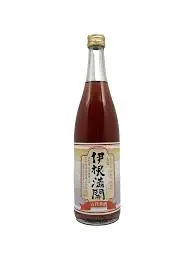
8. Ine Mankai Junmai Genshu
Ine Mankai Junmai Genshu is a sake produced by Mukai Shuzo in Ine, Kyoto Prefecture. Brewed by Kuniko Mukai, one of Japan’s pioneering female master brewers, this sake incorporates an ancient red rice variety called Murasaki Komachi, which imparts a distinctive pink hue. It is characterized by a balance of high sugar and acidity levels, resulting in a unique flavor profile. The aroma includes notes of cherry and vanilla, while the palate features sweet and tart cherry, pomegranate, and a savory, umami-rich finish.
This sake is best served chilled and pairs well with a variety of dishes. It complements both savory and sweet foods, making it versatile for different culinary experiences. The unique combination of flavors and its distinctive color make it a conversation starter at any gathering.
Key Highlights:
- Junmai Genshu classification
- Distinctive pink hue from red rice
- Flavor notes: cherry, vanilla, pomegranate, umami-rich finish
- Best served chilled
What will it go with:
- Smoked foods
- Vegetable dishes
- Desserts
- Cheese
- Sweet and savory pairings

9. Gekkeikan
Gekkeikan is a widely available sake from one of Japan’s oldest brewing companies. While the brand offers many varieties, its standard junmai option is considered a basic, entry-level sake. It may lack the refinement of premium labels, but it functions well as a cooking ingredient due to its affordability and simplicity.
Though some drinkers find the standard version too sharp when consumed at room temperature or chilled, others enjoy it warmed or paired with food. In the kitchen, it is commonly used to tenderize meat, reduce odors, or add mild umami depth to a dish.
Key Highlights:
- Entry-level junmai sake
- Affordable and widely available
- Often used in cooking for its functional qualities
- Can be served warm or at room temperature, though not always preferred for sipping
- Suitable for basic culinary applications
What will it go with:
- Simmered dishes or braises
- Marinades for fish or meat
- Stir-fry sauces
- Light soups needing a sake base
- Grilled meat glazes
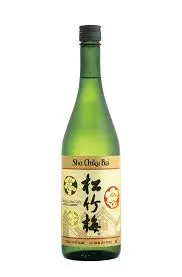
10. Sho Chiku Bai Junmai
Sho Chiku Bai Junmai is a light-bodied sake that serves as a dependable and affordable option for both casual sipping and light cooking use. It features a mild aroma and a clean finish, making it easy to integrate into cold preparations or delicate dishes. While not considered a premium or refined junmai, its subtle character can complement recipes without overwhelming the primary ingredients.
Versatile for both light culinary applications (e.g., dressings, finishing sauces) and high-heat cooking (e.g., simmering, soups). However, due to its relatively delicate profile, it is less suited for high-heat cooking or richly flavored dishes.
Key Highlights:
- Junmai style with light body and mild aroma
- Best suited for cold or lightly cooked dishes
- Not ideal for high-heat cooking due to delicate profile
- Intended primarily for drinking, but can enhance light recipes
- Should be used sparingly in culinary applications
What will it go with:
- Seafood carpaccio or sashimi
- Cold salads with sake-based dressing
- Cucumber pickles or lightly pickled vegetables
- Poached shrimp or scallops

11. Hakutsuru Junmai
Hakutsuru Junmai has a light body and classic sake flavor, making it a steady choice for recipes where you want sake to be present but not overly strong. Its flexibility in temperature allows it to be used hot or cold depending on the dish.
This sake performs well in cooking due to its neutral profile. It can be added to recipes for simmered fish, miso-based soups, or in poaching liquids for vegetables. While not complex, its consistency and clean finish make it a reliable kitchen option.
Key Highlights:
- Junmai style with dry, mild character
- Neutral aroma and flavor profile
- Suitable for a wide range of dishes
- Low intensity, so it doesn’t compete with other ingredients
What will it go with:
- Poached fish or tofu
- Soy-based simmered dishes
- Vegetable hotpots
- Cooking rice with dashi and mushrooms
- General-purpose sake use in cooking
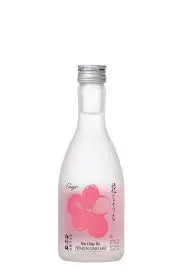
12. Sho Chiku Bai Ginjo
Sho Chiku Bai Premium Ginjo is a ginjo sake brewed in Berkeley, California by Takara Sake USA. It is made from Calrose rice polished to 50%, meeting the technical standards for the ginjo category. This sake has a delicate, fruity aroma with notes of pear, melon, and honeysuckle, and a clean, lightly dry finish. It is designed primarily for drinking and shows best when served chilled to highlight its nuanced flavor and aroma.
While not commonly used in cooking, its subtle character can enhance light dishes when added near the end of preparation. However, its delicate profile is not well-suited for high-heat cooking, as the refined notes may be lost. Due to its quality and flavor, it is best enjoyed on its own or paired with mild, refined foods.
Key Highlights:
- Ginjo classification with 50% rice polishing ratio
- Brewed with Calrose rice in Berkeley, California
- Delicate, fruity aroma with light dry finish
- Best served chilled to preserve flavor
- Can be used sparingly in cold or delicate culinary applications
What will it go with:
- White tuna or scallop sashimi
- Steamed cod or poached shrimp
- Fresh oysters or Amaebi sushi
- Brie and mild creamy cheeses
- Cold dishes with subtle flavor profiles
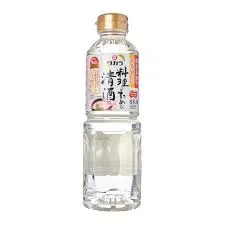
13. Takara Cooking Sake
Takara Cooking Sake is a rice-based cooking wine produced by Takara, a well-established sake and mirin manufacturer. This product is specifically formulated for culinary use and is not intended for drinking. Contains added salt to render it unsuitable for drinking, complying with regulations and avoiding beverage alcohol taxes in some markets.
Despite not being a traditional junmai or ginjo sake, it effectively serves as a flavor enhancer in a variety of dishes. It helps tenderize ingredients, reduce odors, and enrich umami without the complexity or cost of premium drinking sakes.
Key Highlights:
- Designed specifically for cooking purposes
- Contains added salt, not intended for drinking
- Formulated to enhance umami and reduce unwanted odors
- Made with rice and koji (Aspergillus oryzae)
- Affordable and functional for everyday culinary use
What will it go with:
- Simmered fish and seafood
- Marinades for chicken or pork
- Dashi-based soups and sauces
- Stir-fried vegetables with protein
- Braised or poached meat dishes
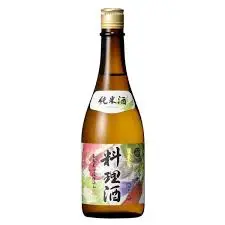
14. Hakusen Fukuraijun Junmai Cooking Sake Premium Cooking Rice Wine
Hakusen Fukuraijun Junmai Cooking Sake is a cooking-specific rice wine produced by Hakusen Shuzo in Gifu Prefecture. It is made from high-quality sake rice and follows the brewery’s traditional four-step manufacturing process. Unlike many cooking sakes, this product does not contain added salt, making it versatile enough for both culinary use and light drinking if desired.
The sake is rich in umami due to the natural amino acids developed during fermentation. It is intended to enhance the flavor of ingredients without overpowering them and works especially well in applications like simmered dishes, sauces, or sautéed foods. The absence of artificial flavoring or additives makes it a cleaner choice for recipes where the taste of sake plays an active role in the final dish.
Key Highlights:
- Junmai classification cooking sake
- Made with premium sake rice from Gifu Prefecture
- Produced using a four-step traditional method
- No added salt or artificial flavorings
- Naturally rich in umami due to amino acids
What will it go with:
- Sukiyaki and hotpot-style dishes
- Sautéed vegetables or meats
- Light broths and clear soups
- Teriyaki sauces or soy-based reductions
- Steamed fish or shellfish preparations

15. Fukumitsuya Organic Cooking Sake Pure Rice Wine Seasoning
Fukumitsuya Organic Cooking Sake is a pure rice cooking sake made from organically grown rice and natural spring water. Fukumitsuya, a brewery in Kanazawa with a history dating back to 1625. This cooking sake is free from added salt or artificial flavorings, which makes it a cleaner option for recipes where the sake’s contribution to flavor matters. Its character is described as mellow, full-bodied.
The use of premium rice and a long maturation process results in a cooking sake that can enhance a variety of cuisines. It brings natural umami to a dish and helps highlight the flavor of other ingredients without being overpowering. Because it contains no additives, this sake is also usable in recipes where subtlety and ingredient purity are important. While intended for cooking, it is made with drinking-level quality and could be consumed lightly if desired.
Key Highlights:
- Made from organic rice
- No added salt or artificial flavorings
- Naturally rich in umami
- Can be used in Japanese, Chinese, or Western dishes
- Pure rice sake with high ingredient quality
What will it go with:
- Simmered dishes and slow-cooked stews
- Poached or grilled fish
- Soy-based sauces and reductions
- Broths with vegetables or tofu
- Dishes requiring gentle umami enrichment without overpowering the main ingredients
Conclusion
When it comes to cooking with sake, the main thing to remember is that you don’t need the most expensive bottle, but you also don’t want something that tastes too harsh or artificial. A good cooking sake should bring out the natural flavors in your food, add umami, and help ingredients like meat and fish cook up more tender and flavorful.
There’s a solid range of options out there – from basic, budget-friendly bottles like Gekkeikan to purpose-made cooking sakes like Fukumitsuya Organic or other salt-added varieties made specifically for the kitchen. Some drinkable sakes like Ozeki Yamadanishiki or Sho Chiku Bai Junmai also do double duty in the kitchen. The right choice depends on what you’re making and how often you cook with sake. Keep a bottle in your pantry, and you’ll probably find yourself reaching for it more than you expect.

Leave a Reply